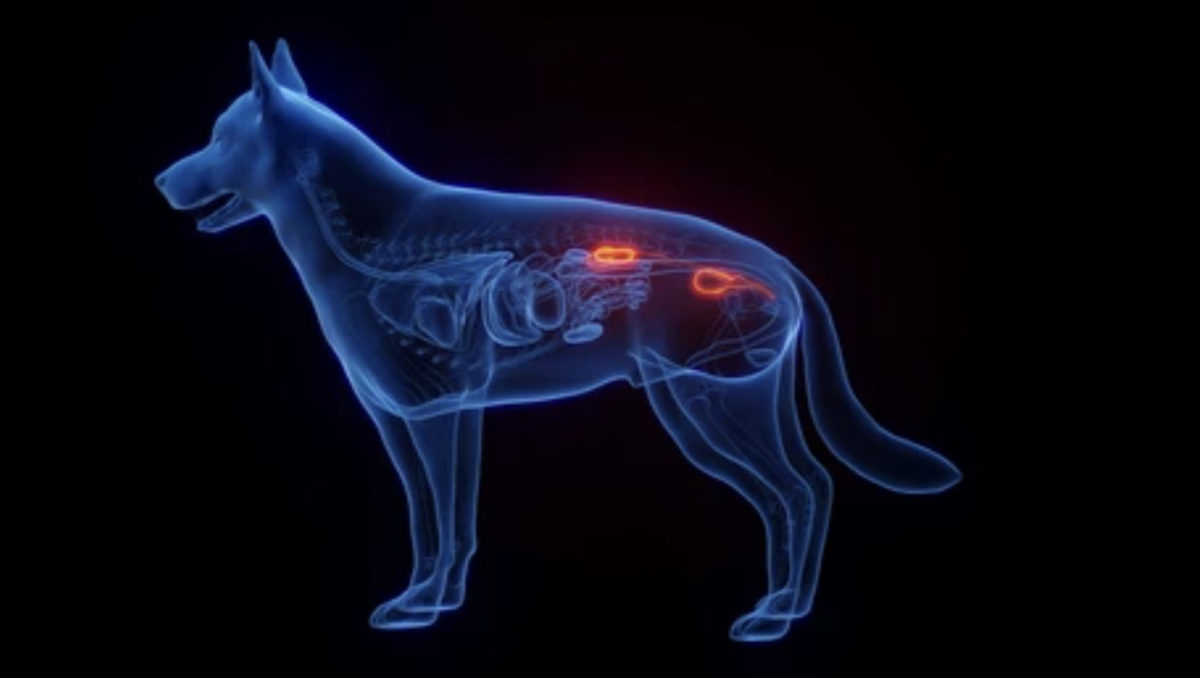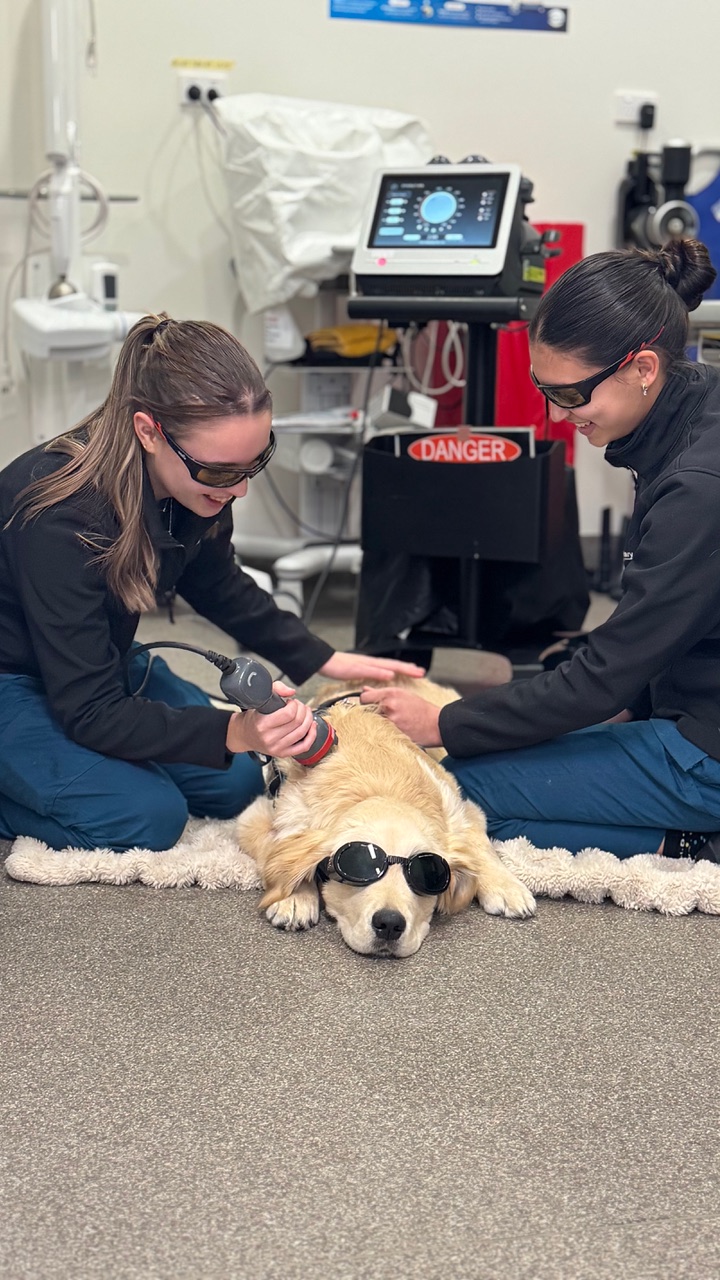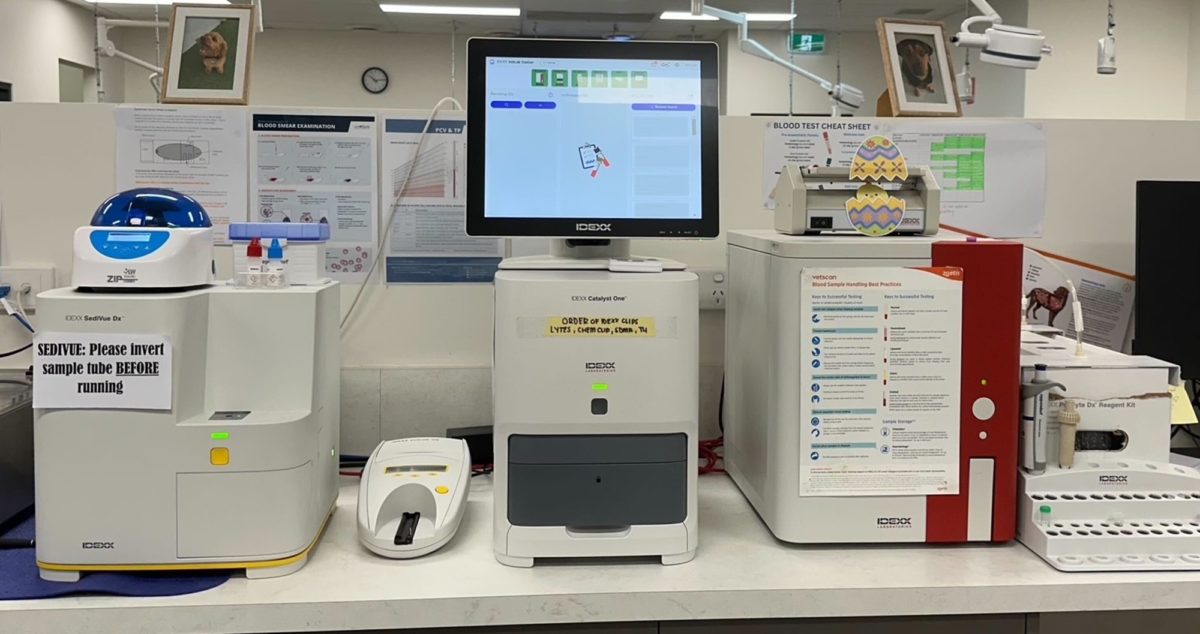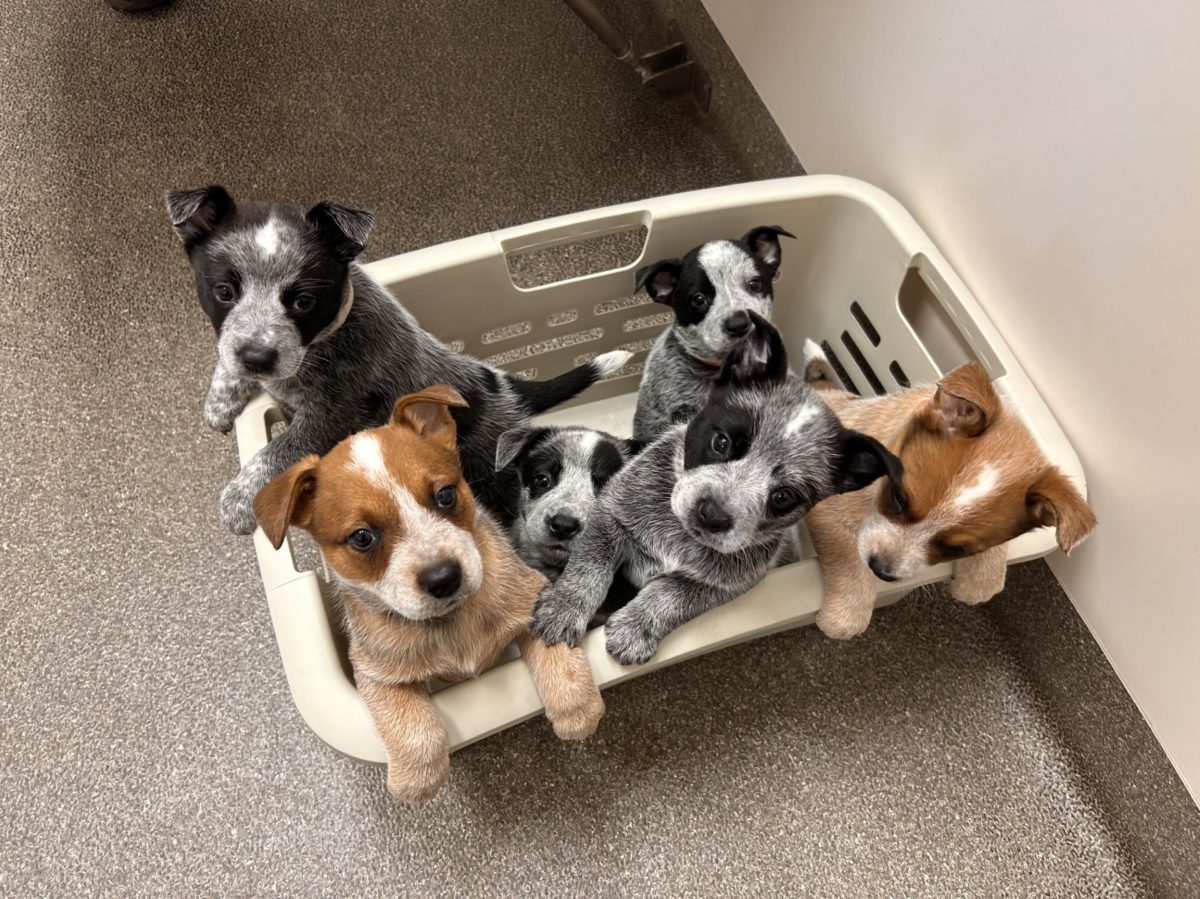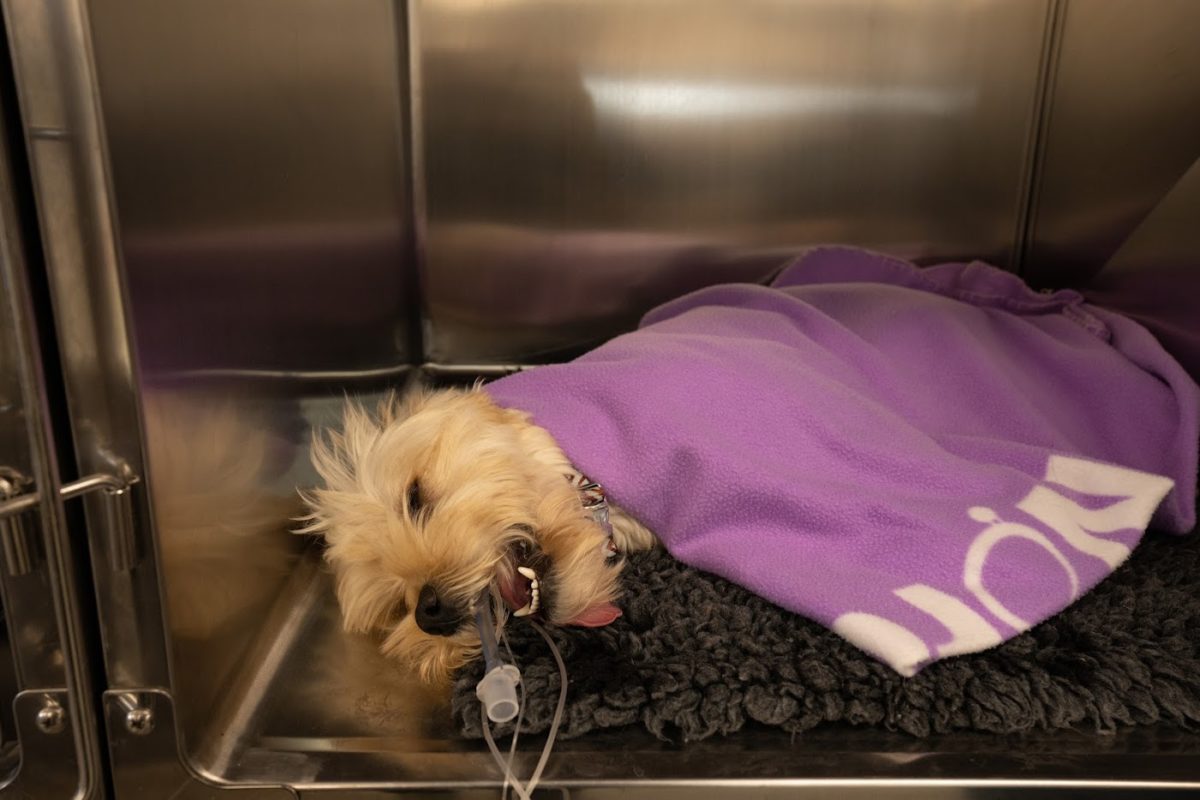Learn more about kidney disease in dogs and cats: how you can spot it, how it can be treated, and how to support your pets' urinary health.
Discover one of the reasons behind your pet's increased scratching, and learn more about atopic dermatitis in both dogs and cats.
Discover the benefits of veterinary scoping at Clyde Vet Hospital. Our advanced, minimally invasive techniques help diagnose and treat pets with greater accuracy, less pain, and faster recovery.
Discover how laser therapy can help relieve pain, reduce inflammation, and speed healing in pets. Safe, non-invasive treatment for dogs and cats.
Senior pets deserve a lifestyle that supports their health, comfort, and emotional well-being. As our dogs and cats grow older, they don’t just age – they evolve. Just like us, their needs change with time, and so should the way we care for them. If your pet is 7 or older (or 10+ for cats), it’s time to think beyond basic care.
This isn’t about watching them slow down – it’s about helping them thrive in their golden years. Whether your pet is already showing signs of aging or you’re preparing for the future, here’s how to make their later years truly golden.
💡 Why Senior Pet Care is Essential
When your pet hits the senior stage, you’re not just a pet owner – you become their wellness coach, their advocate, and their companion through change
- Senior pets are more prone to conditions like
Arthritis and joint pain
Dental disease
Kidney failure
Cognitive decline (canine and feline dementia)
- Early lifestyle adjustments can prevent or slow down serious health issues
- Emotional support is key to reducing anxiety and confusion in aging pets
By taking a proactive, whole-pet approach, you can extend not just their lifespan, but their health span – the years they feel good, active, and loved.
🥕 Senior Pet Nutrition: Fuel for Longevity
Your senior pet’s metabolism is slowing down, but their need for high-quality, targeted nutrition is ramping up. Look for food that supports:
- Joint health – glucosamine, chondroitin, omega-3s
- Cognitive function – antioxidants, DHA, B vitamins
- Kidney support – lower phosphorus and sodium levels
- Easy digestion – senior formulas with prebiotics and moderate protein
👉 Bonus tip: Ask your vet about supplements to support joint and digestive health.
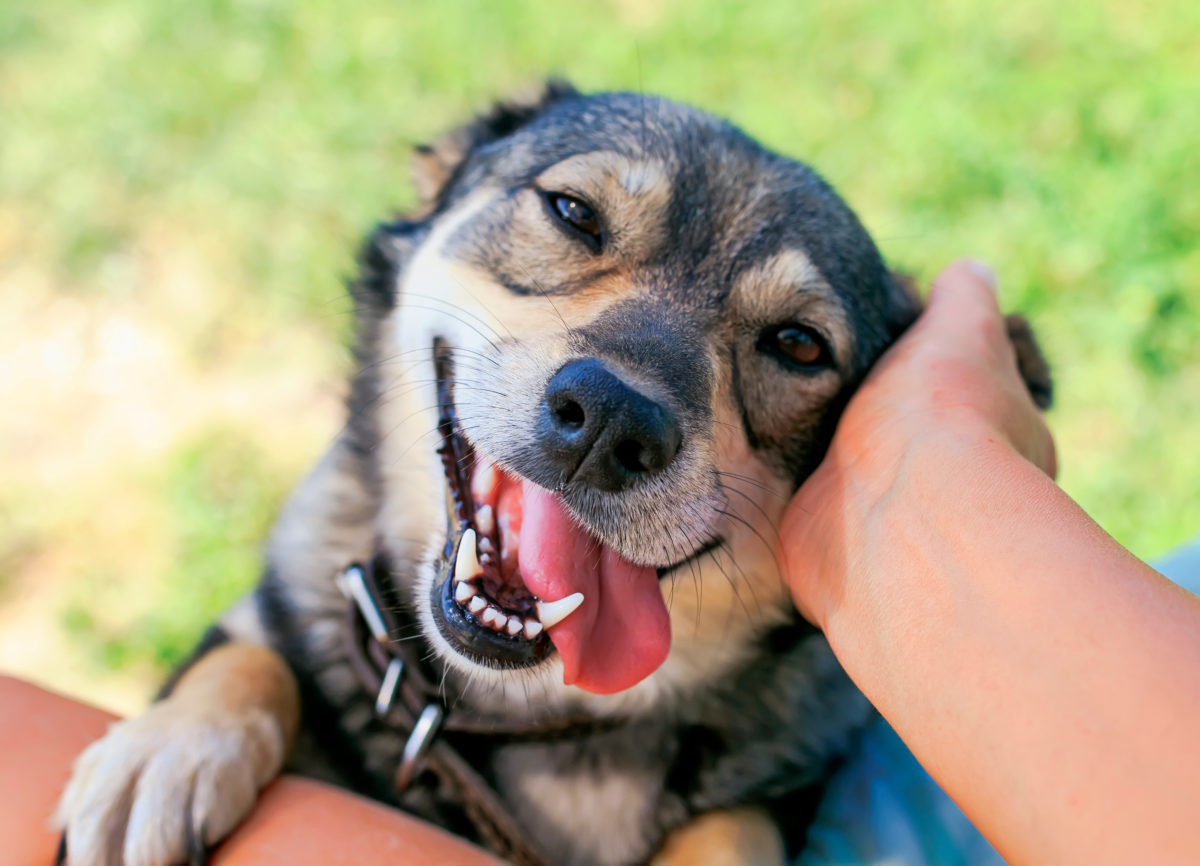
🐾 Movement, Not Mayhem: Exercise for Senior Pets
Exercise is crucial – but it should be gentle and consistent. Think mobility over intensity.
For dogs:
- Leisurely walks on soft terrain
- Swimming or hydrotherapy
- Canine stretching and massage
For cats:
- Climbing trees or ramps
- Laser toys or food puzzles
- Window views for stimulation
Even just 10–15 minutes a day of low-impact activity can ease stiffness, improve mood, and keep the pounds off.
🏡 Home Comforts: Build a Senior-Friendly Sanctuary
A few simple changes to your home can dramatically improve your aging pet’s comfort:
- Soft orthopedic bedding
- Non-slip rugs or mats for traction
- Ramps or stairs to access furniture
- Nightlights for vision-impaired pets
- Easy access to litter boxes or food bowls
Make your home their wellness retreat, tailored for ease and safety.
🧠 Mental Stimulation & Emotional Health
Don’t overlook their mind and mood. Senior pets are more prone to anxiety, confusion, and cognitive dysfunction.
Ways to keep them sharp and soothed:
- Rotate interactive toys
- Use scent games and new walking routes
- Play calming music or white noise
- Stick to consistent daily routines
- Schedule regular cuddle time (it’s medicine!)
Your love and presence are their anchor. Be intentional about time together – slow walks, quiet evenings, gentle brushing—these rituals mean the world to them.
🩺 Vet Care: Prevention Over Reaction
Regular check-ups are no longer optional. Senior pets need biannual vet visits, including:
- Full blood panels
- Urinalysis
- Blood pressure checks
- Dental exams
Catching disease early makes all the difference. Make wellness checkups part of your pet’s new normal.
❤️ Final Thoughts: Aging Is a Season to Celebrate
Your senior pet is still the same loyal heart wrapped in a little more grey. They’ve been your companion through thick and thin – it’s your turn to give them a life filled with comfort, dignity, and joy.
By approaching senior care through the lens of wellness and connection, you’re giving them more than just extra time, you’re giving them quality years.
Book an Appointment Today
Whether you’re looking for advice, reassurance, or a little extra guidance, the Clyde Veterinary Team is here to support you and your furry family members every step of the way. Reach out to us for expert care tailored to keep your pets happy, healthy, and thriving.
About the Author:
Dr. Irene Mitry is the owner and founder of Clyde Veterinary Hospital, and a vet with a difference. She has not one, but two veterinary degrees, and an abiding passion for preventative pet care. Her life-long love for our animal friends shines through in everything she does, as her client testimonials show. Dr Mitry’s long-standing desire to bring this philosophy of care to life in her own purpose-built veterinary clinic led her to found Clyde Veterinary Hospital in 2018.
Noticing unusual behaviour in your pet? Clyde Vet explains what changes in mood, energy, or habits might mean—and how to spot signs of pain, anxiety, or illness in cats and dogs.
Learn the signs, causes, and treatment options for Cushing’s disease in dogs. Understand how early diagnosis can improve your pet’s quality of life.
Border Collies are a breed like no other, known for their intelligence, agility, and work ethic. Originally bred to herd livestock, these dogs are energetic, eager to please, and often thrive in active environments. However, owning a Border Collie comes with unique challenges, particularly concerning their mental health, grooming needs, and potential health conditions. In this blog, we’ll delve into these aspects to help you provide the best care for your furry friend.
As pet owners, we all want our furry friends to be healthy and happy, but sometimes pets can face health issues similar to humans. One such issue is diabetes. While it may sound like something that only affects people, dogs and cats can also develop diabetes. If you’re wondering whether your pet can get diabetes, how to recognise the signs, and how to manage it, you’re in the right place.
Can My Dog Or Cat Get Diabetes? Are They Like Humans, Needing Insulin?
Yes, both dogs and cats can develop diabetes, and it can affect them similarly to how it affects humans. There are two main types of diabetes in pets:
- Diabetes Insipidus: This is a rare form of diabetes, often linked to hormonal imbalances. It’s different from the more common type but still something to be aware of.
- Diabetes Mellitus: This is the most common type of diabetes in pets, and it’s similar to type 2 diabetes in humans. Diabetes mellitus occurs when the body is unable to regulate insulin properly, either due to insufficient insulin production or the body’s inability to use it effectively. This causes a spike in blood glucose levels. Pets with this form of diabetes will often require insulin injections to help regulate their blood glucose levels.
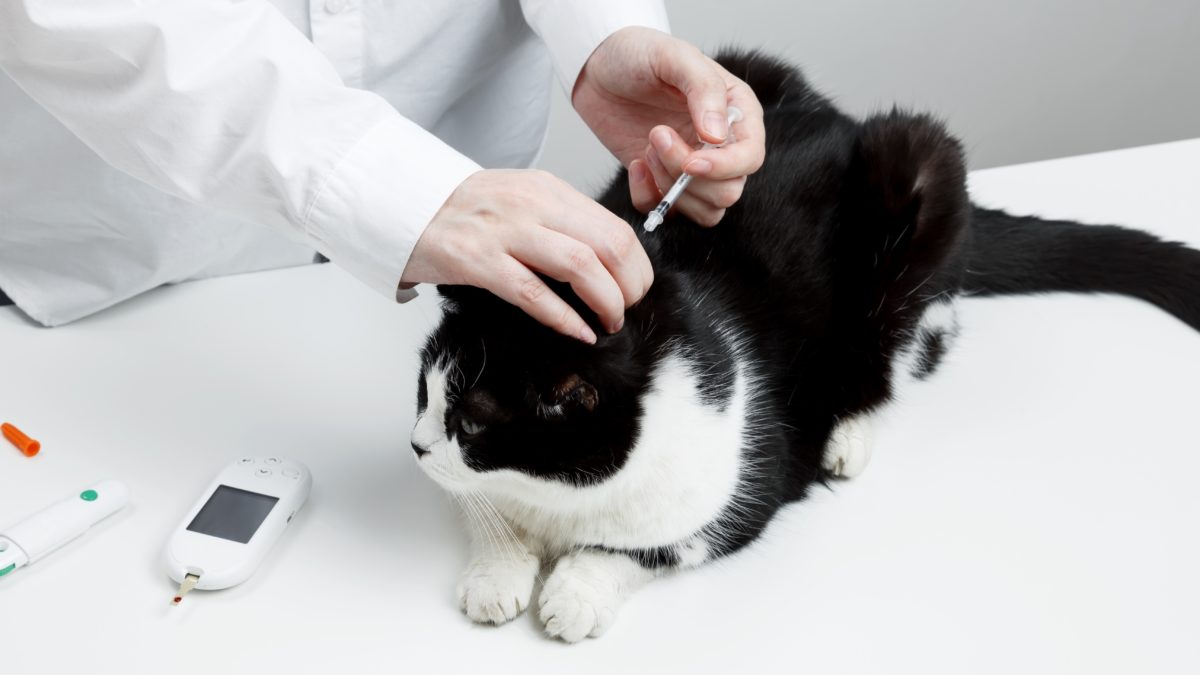
What Do I Need To Look For If My Pet Is Diabetic?
Recognising the signs of diabetes early can help your pet avoid complications and lead to a more successful treatment. Some common symptoms to watch out for include:
- Increased Thirst and Urination: If you find yourself filling your pet’s water bowl more often or noticing an increase in accidents around the house, this could be a sign of diabetes. When blood sugar levels are high, pets will drink more to compensate for dehydration, and they may urinate more frequently.
- Weight Loss: Despite an increase in appetite, your pet may lose weight rapidly. This is because their body is not able to properly utilise glucose for energy, and it begins breaking down muscle and fat stores instead.
- Bad Breath: A distinct, sweet or fruity odor on your pet’s breath is often a sign of diabetes. This can occur when the body starts burning fat for energy due to a lack of glucose.
- Lethargy or Weakness: You may notice that your pet seems more tired or sluggish than usual. The lack of energy from glucose can cause them to be less active.
Why Do I Have To Treat Diabetes As Soon As Possible?
It’s crucial to treat diabetes in pets as soon as possible to avoid serious health complications. If left untreated, elevated blood glucose levels can cause a range of health problems, including damage to vital organs like the kidneys, liver, and eyes. Additionally, untreated diabetes can lead to a severe and life-threatening condition called ketoacidosis, where the blood becomes too acidic, leading to vomiting, lethargy, and potentially coma. Early intervention helps to stabilise blood sugar levels, preventing further complications and ensuring your pet’s long-term health.
What Do I Need To Look After My Diabetic Pet?
Managing a diabetic pet requires dedication, but with proper care, many pets can live happy and healthy lives. Here’s what you’ll need to do to care for your diabetic pet:
- Regular Insulin Injections: If your pet is diagnosed with diabetes mellitus, they will likely need insulin injections. This helps regulate their blood glucose levels. Your veterinarian will teach you how to administer the injections, and it’s essential to stick to the recommended schedule.
- Proper Diet: Feeding your diabetic pet the right food is key to managing their condition. A high-fibre diet that helps regulate blood sugar is often recommended. Work with your vet to determine the best diet plan for your pet’s specific needs.
- Monitor Blood Glucose Levels: Just like humans with diabetes, your pet’s blood glucose will need to be monitored regularly. Your vet will guide you on how to check their glucose levels at home and may suggest blood tests during vet visits.
- Exercise and Weight Management: Regular exercise is essential for diabetic pets, as it helps regulate blood sugar levels and maintain a healthy weight. However, any exercise plan should be tailored to your pet’s individual needs and abilities. Excess weight can worsen diabetes, so maintaining a healthy weight is crucial.
- Frequent Vet Checkups: Regular checkups with your veterinarian are essential for monitoring your pet’s condition. They will adjust insulin doses as needed, and keep track of any potential complications, ensuring the best care possible.
How To Prevent Diabetes In Pets
Preventing diabetes in your pets involves addressing the factors that contribute to the development of the disease. Although you can’t control genetics, there are steps you can take to minimise the risk:
- Maintain a Healthy Weight: Obesity is one of the most significant risk factors for diabetes in pets. Overweight pets are more likely to develop diabetes, as extra body fat can lead to insulin resistance. Keep your pet’s weight in check by feeding a balanced diet and engaging in regular physical activity.
- Encourage Regular Exercise: Physical activity helps keep your pet’s weight under control and promotes proper insulin use in the body. Daily walks for dogs and active playtime for cats are great ways to keep them moving and healthy.
- Provide a Balanced Diet: Feed your pet a nutritious diet tailored to their needs. High-quality pet foods that are low in carbohydrates and high in fibre can help maintain blood sugar levels. Limit treats, and avoid feeding them human food, which is often high in sugar or fat.
- Regular Vet Checkups: Regular veterinary visits are essential to monitor your pet’s health and detect any early signs of diabetes or other issues. This includes checking for early symptoms such as weight loss or excessive thirst, which can be indicators of diabetes.
- Limit Stress: Chronic stress can affect your pet’s overall health, including the development of diabetes. Ensure your pet has a stable environment with a predictable routine and plenty of opportunities for relaxation and play.
- Monitor for Early Signs: Keep an eye on your pet’s behaviour and health. If you notice any changes in appetite, thirst, or urination, or if they begin losing weight without reason, it’s essential to consult a vet right away. Early detection and treatment can prevent diabetes from becoming a more serious problem.
Conclusion
Just like humans, cats and dogs can develop diabetes, and managing the disease is vital to their health and well-being. Recognising the signs early, starting treatment promptly, and following the Clyde Veterinary Team’s recommendations can make a big difference. With proper care, your diabetic pet can lead a full, happy life. If you notice any signs of diabetes in your pet, don’t hesitate to contact Clyde Veterinary Hospital for a proper diagnosis and treatment plan.
Book an Appointment Today
Whether you’re looking for advice, reassurance, or a little extra guidance, the Clyde Veterinary Team is here to support you and your furry family members every step of the way. Reach out to us for expert care tailored to keep your pets happy, healthy, and thriving.
About the Author:
Dr. Irene Mitry is the owner and founder of Clyde Veterinary Hospital, and a vet with a difference. She has not one, but two veterinary degrees, and an abiding passion for preventative pet care. Her life-long love for our animal friends shines through in everything she does, as her client testimonials show. Dr Mitry’s long-standing desire to bring this philosophy of care to life in her own purpose-built veterinary clinic led her to found Clyde Veterinary Hospital in 2018.
Annual blood tests are a vital part of your pet’s healthcare routine, providing a baseline for comparison, enabling early detection of health issues, and uncovering hidden conditions before they become serious. From spotting early signs of disease to ensuring safe anaesthesia during procedures, regular bloodwork helps your pet live a longer, healthier life. Learn why prevention through routine testing is key to your pet’s well-being.
Discover how to choose the best food for your pet with this comprehensive guide. Learn about age-specific diets, dry vs. wet food, and how to monitor your pet's health through nutrition. Ensure your furry friend stays happy and healthy!
How to Keep Your Pet Safe in Hot Weather
As the summer sun shines bright, many dog owners are eager to enjoy outdoor activities with their furry companions. Whether it’s a walk in the park, a beach day, or a game of fetch in the backyard, the warm weather can be a lot of fun for both humans and their pets. But while we can simply put on sunscreen or step into the shade, your dog can’t take off their fur coat to cool down.
Heat stroke in dogs is a serious concern that can be life-threatening if not handled quickly and properly. Understanding the signs of heat stroke, how dogs regulate their body temperature, and knowing what to do in an emergency can help protect your pet from harm and ensure they stay safe during hot weather.
How Do Dogs Cool Down?
Dogs have a few methods of dissipating heat, but they’re not as efficient at cooling off as humans are. Unlike us, dogs don’t sweat to regulate their body temperature. Instead, they rely on:
- Evaporation
Dogs cool down by panting. As they breathe in, the moisture in their noses and mouths evaporates, carrying heat away from their bodies. The faster the panting, the more heat they can release. - Conduction
Your dog will also try to cool down by lying on a cool surface. This helps them absorb heat from their bodies into the cooler floor beneath them. - Convection
When a dog sticks their head out of the car window, they’re using the breeze or moving air to help cool their skin. This helps them regulate their body temperature when air is moving around them.
Signs of Heat Stroke in Dogs
It’s essential to recognise the early signs of heat stroke in dogs so you can act quickly. Heat stroke occurs when your dog’s body becomes unable to cool itself efficiently, and it can be life-threatening. Some common signs to watch out for include:
- Excessive Panting and Drooling
Heavy panting is one of the first signs that your dog is overheating. You may also notice excessive drooling or foaming around their mouth. - Increased Thirst
If your dog is drinking more water than usual or excessively licking their lips, they may be trying to rehydrate due to heat exhaustion. - Lethargy or Disorientation
If your dog seems unusually tired, sluggish, or disoriented, it could be a sign they are suffering from heat stroke. - Vomiting or Diarrhea
Heat stroke can cause gastrointestinal distress, including vomiting or diarrhea. - Heavy, Sustained Breathing
If your dog is struggling to breathe, especially with an open mouth or labored effort, this is a serious warning sign. - Collapse
In the most severe cases, heat stroke can cause your dog to collapse, which requires immediate veterinary attention.
What to Do If Your Dog Has Heat Stroke
If you suspect your dog is experiencing heat stroke, you must act fast. The earlier you intervene, the better the outcome for your dog.
- Hydrate Them
Ensure your dog always has access to fresh water. You can offer them small sips of cool water, but never force them to drink large amounts at once.
- Get Them Indoors
Move your dog to a cool, shaded area, ideally with air conditioning or a fan. Don’t rely on shade alone—your dog needs to be in a cooler environment to recover.
- Cool Them Down
Place your dog on a cool surface like a tile floor or wooden floorboards. If you’re outdoors, wet towels with cool (not cold) water and gently apply them to your dog’s body. Avoid using ice or ice-cold water, as it can cause shock. A gentle stream of cool water from a hose or a fan blowing on your dog can also help.
- Avoid Exercise
Do not attempt to walk your dog or make them exercise in the heat. If your dog seems overheated, it’s best to avoid outdoor activities altogether until temperatures cool down.
- Consider Shaving Your Dog’s Coat or Full Groom
- If your dog has a thick, dense coat (such as a Siberian Husky), it’s important to groom them before the hot weather starts to help remove the winter undercoat. This can improve their ability to regulate body heat and stay cooler.
- For dogs with curly or heavy coats, such as Poodles, trimming their fur during the warmer months can also help them stay more comfortable. However, it’s crucial to consult with a professional groomer or veterinarian to ensure that shaving or trimming is safe for your dog’s
- Seek Veterinary Help Immediately
If your dog’s symptoms don’t improve or worsen, get them to a veterinarian immediately. Heat stroke can cause serious internal damage, and time is of the essence in these cases. Make sure to transport your dog to a vet while providing them with wet towels and air conditioning to prevent further heat stress.
Breeds at Higher Risk for Heat Stroke
While all dogs can experience heat stroke, some breeds are more prone to overheating due to their physical characteristics. Short-nosed breeds, such as Bulldogs, Pugs, and Boxers, have a harder time panting effectively, making them more susceptible to heat stroke. Older dogs, overweight dogs, and those with underlying health conditions are also at a higher risk.
Preventing Heat Stroke in Dogs
The best way to prevent heat stroke is to take precautions before it happens. Here are some tips for keeping your dog safe during the summer months:
- Provide Fresh Water
Always have fresh water available, especially on hot days, and make sure your dog stays hydrated. - Avoid Hot Walks
Try to walk your dog early in the morning or late in the evening when it’s cooler. Avoid walking during the heat of the day, especially on hot pavement, which can burn their paws. - Keep Your Dog Indoors
If the weather is extremely hot, keep your dog inside with access to cool, shaded spaces. Limit outdoor activity during peak heat hours. - Monitor for Symptoms
Pay attention to any signs of heat distress, and be ready to act quickly if needed.
Conclusion
- While summer is a time for fun and outdoor adventures with your dog, it’s important to stay vigilant about the risks of heat stroke. By understanding how dogs dissipate heat and recognising the signs of overheating, you can ensure your dog stays safe, comfortable, and hydrated throughout the warmer months.
- With a little extra care, your dog can enjoy the summer sun without putting their health at risk. If you notice any of the symptoms of heat stroke, act quickly and seek veterinary help if necessary. Together, you and your dog can enjoy many more sunny days!
Need More Help Keeping Your Dog Safe in the Heat?
At Clyde Veterinary Hospital, we’re here to help ensure your dog stays healthy and happy all year round, no matter the weather. If you have any questions about heat stroke prevention or need advice on your pet’s well-being, don’t hesitate to reach out. Our team of experts is available to guide you in keeping your furry friend comfortable during hot weather.
Book an Appointment Today
Whether you’re looking for advice, reassurance, or a little extra guidance, the Clyde Veterinary Team is here to support you and your furry family members every step of the way. Reach out to us for expert care tailored to keep your pets happy, healthy, and thriving.
About the Author:
Dr. Irene Mitry is the owner and founder of Clyde Veterinary Hospital, and a vet with a difference. She has not one, but two veterinary degrees, and an abiding passion for preventative pet care. Her life-long love for our animal friends shines through in everything she does, as her client testimonials show. Dr Mitry’s long-standing desire to bring this philosophy of care to life in her own purpose-built veterinary clinic led her to found Clyde Veterinary Hospital in 2018.


